- Document History
- Subscribe to RSS Feed
- Mark as New
- Mark as Read
- Bookmark
- Subscribe
- Printer Friendly Page
- Report to a Moderator
- Subscribe to RSS Feed
- Mark as New
- Mark as Read
- Bookmark
- Subscribe
- Printer Friendly Page
- Report to a Moderator
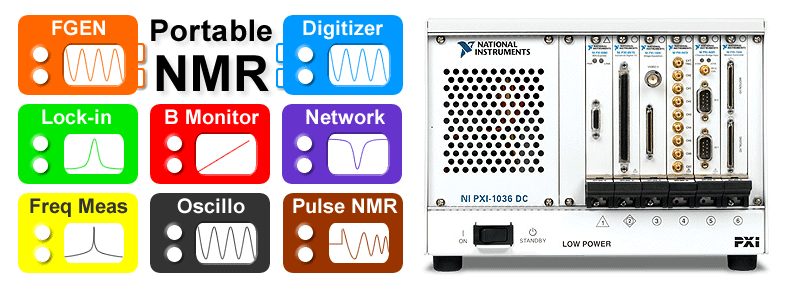
ContactInformation
University: Osaka university
Team Member(s): Takeshi Ohta
Email Address: takeshi@rcnp.osaka-u.ac.jp
ProjectInformation
Title:
Portable NMR measurement system using PXIand LabVIEW
Description:
A portable NMR measurementsystem has been developed to obtain the polarization of a polarizedHydrogen-Deuteride (HD) target for photoproduction experiments. We succeeded indownsizing the NMR measurement system constructed analogue instruments toportable size with low cost using PXI and LabVIEW.
Products:
PXI-1036 (chassis)
PXI-8360 (controller for laptop PC)
PXI-5404 (100Mz FGEN)
PXI-5114 (250MS/s 8bit)
PXI-5142 (100MS/s 14bit)
The Challenge:
A polarized HDtarget is produced for hadron photoproduction experiments. The target isproduced at Osaka university and then transported at SPring-8 which is locatedat a distance of about 130 km from Osaka university for the experiment.Although the NMR measurement system is required monitoring the polarization of theHD target in both places, the system is heavy and large for a long-distancetransportation. We have challenged to develop a portable NMR system to replace theheavy conventional system to measure the polarization of HD target. The portableNMR system has been constructed with PXI and LabVIEW controlled by a usuallaptop computer.
The Solution:
Concept and design
The conventionalNMR measurement system mainly consists of a signal generator, an oscilloscope,a lock-in amplifier and a network analyzer. The network analyzer is used forminimizing power reflection of the NMR circuit by tuning variable capacitors atoff-resonance frequencies. The oscilloscope is used to observe the signalsreturned from the NMR coil. The lock-in amplifier is used to pick up small RFsignals with a specific frequency. Noises with frequencies other than the referencefrequency are rejected. We can reduce the effect of noises in the NMR measurement.
As shown in Fig. 1, we introduced a circuit tocancel the output signals in the case of the non-resonance. The sinusoidal waveoutput from the signal generator is divided into two components. One is sent tothe NMR coil and the other is sent to the lock-in amplifier as a reference signal.When the nuclear magnetic resonance occurs, the hydrogen in the HD targetabsorbs RF energies from the coil, and the absorption signal is measured withthe lock-in amplifier when magnetic field (or frequency) is swept.
The NMR measurement must be carriedout without reducing the polarization for the HD target. A very weak inputsignal apply. Accordingly, an output signal becomes small, which makes the NMRsignal observation difficult in noisy circuit back-ground. The portable systemmust be designed to pick up the small signal.
Essentially, these instrumentsare able to be constructed from two functions to generate RF signals and to digitizethe signals. If these two functions are virtualized and integrated into one instrument, it is expected that the measurementsystem will be downsized and its cost will be greatly reduced. We designed asimulation program in a first step. And then we constructed a prototype systemin a second step. At last, we reconstructed a practical system based on theprototype system.

Fig. 1. Diagramof conventional NMR measurement system
Simulation program
The function ofPSD (Phase Sensitive Detector) in the Lock-in amplifier is key and maininstrument for NMR measurement in our system. A simulation program was built toconfirm a judgment whether the function would be virtualized or not. Thesimulation program was made by using LabVIEW. We understood that the functionof PSD could be virtualized by using LabVIEW.
Prototype system
We have constructed the prototypesystem of the portable NMR measurement system by using PXI devices and modules.The system consists of PXI-1036 (chassis), PXI-8360 (controller for laptop PC), PXI-5404 (100Mz FGEN), and PXI-5114 (8bit 250MS/s). The schematicdrawing of the portable NMR measurement system is shown in Fig. 2.
The prototype system was constructedfor a week easily, since the simulation program has been built. The functions oflock-in amplifier, network analyzer, and oscilloscope were virtually implementedand realized using the LabVIEW. A lock-in amp part was designed to obtain the signals in thetwo phase whici is in-phase (I)and quadrature (Q).
Fig. 3 shows a frontpanel of the prototype system. The spectrum in the right upper box shows theNMR signal. The peak is due to fluorine which is originates from the targetcell and the support frame made of PCTFE. The noise to the signal was not smallto measure the polarization of HD.
In the prototype system, 100 k samples of digitized NMR signal heights areaccumulated and averaged in each magnetic field setting. In this averagingprocess, statistical errors are decreased. It should be noted that the majorpart of noises come from thermal fluctuation. In order to obtain a high S/N ratio, it is important to accumulate anumber of samples within a measurement period.
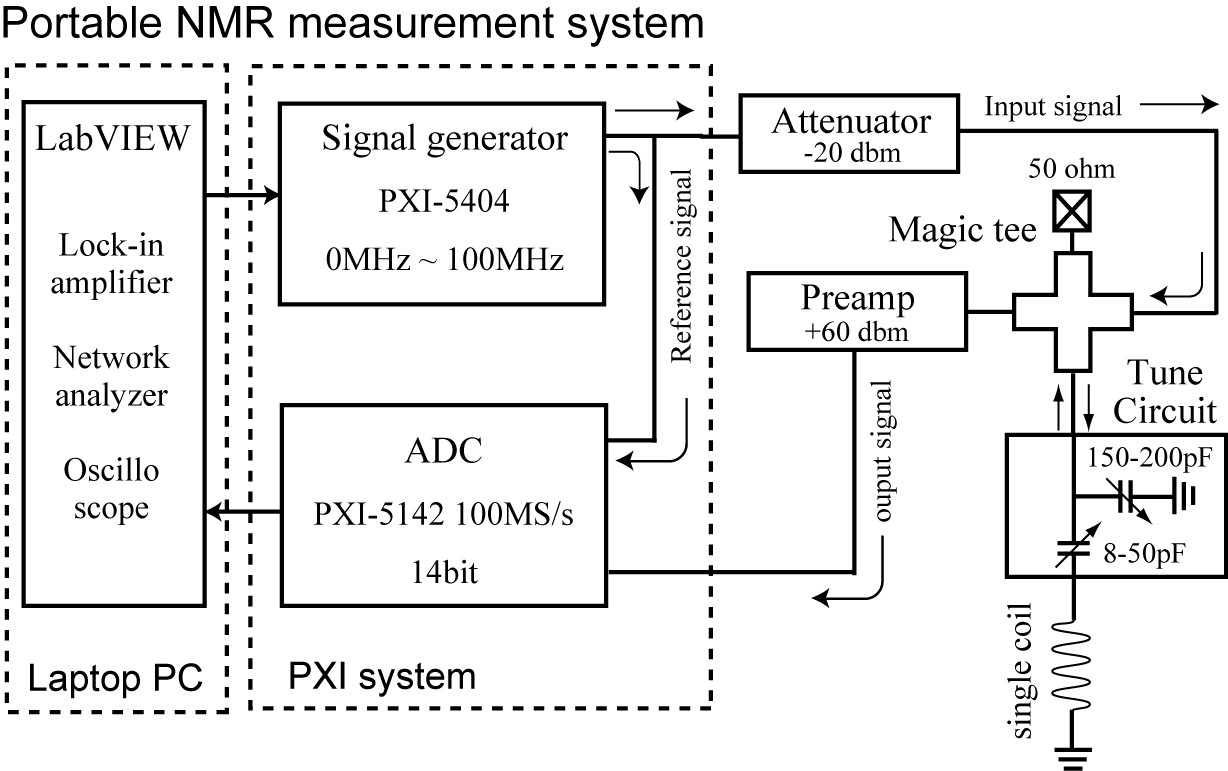
Fig. 2. Diagramof portable NMR measurement system
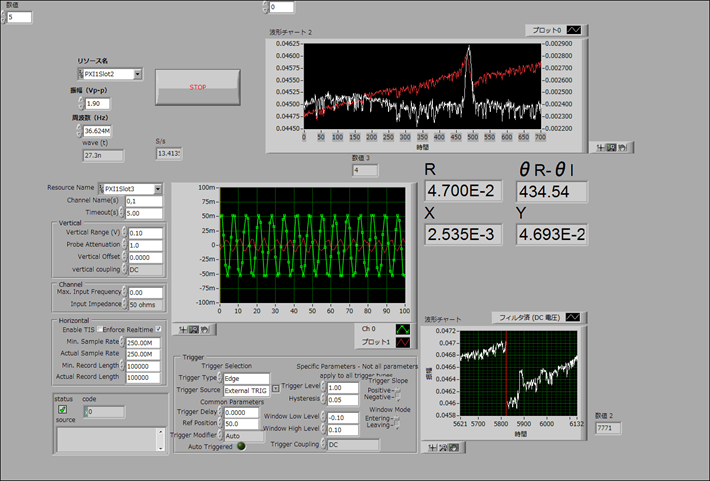
Fig. 3. Front panel of the prototype system. The window in theupper right shows the in-phase (I) and quadrature (Q) signals. The white peakis the NMR signal of fluorine in the upper graph.
Practical system
Since the NMR signal measurement had succeeded in theprototype system, we bought a digitizer PXI-5142 (100MS/s 14bit), which is high-speedand high-resolution more than PXI-5114(250MS/s 8bit), and installed it. And thecodes have been redesigned for improvement of S/N ratio toward the practicaluse as follows.
- NMRmeasurement processes was redesigned simultaneous parallel processing formatching to two cores CPU (Core 2 Duo). The programs were separated parts of dataacquisition and calculate the signal.
- Thevirtual instruments divided on tab-panels respectively. Only the instrumentwith selected tab-panels activates in shown Fig. 4. Resources and memories optimizedand reduced to be useful.
- A low-passfilter which is used by the lock-in amplifier part changed to integratorbecause of passing the direct component.
As a result, a sampling speed in averaing process increases 100 k/s in theprototype to 1 M/s. The peakis NMR signal of fluorine in Fig. 4. The peak shape was improved as comparedwith in Fig. 3. In the conventionalsystem, connectors were changed ports in the instruments by changing thecondition. In the portable system, the operation instrument is switched by atab button on the LabVIEW.
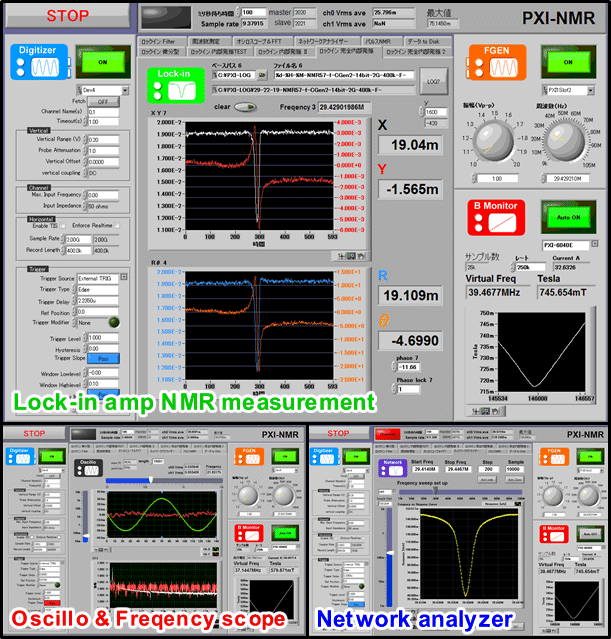
Fig. 4. Front panel of the practical system. Lock-inamplifier, Oscillo scope, Frequency scope, and Network analyzer is changeableby selecting a tab and then activated a selected instrument without handlingconnectors.
Check the performance for theHD
We measured NMR signals due tothe hydrogen in the HD and PCTFE cell to check theperformance of the portable NMR measurement system. Fig. 5 shows NMRspectra obtained by using the conventional NMR and the portable NMR systems(with PXI-5114 and PXI-5142). Both H and F resonance signals are clearlyobserved at 0.688 and 0.729 T, respectively at 1.5 K.
The resonance of F originates from the targetcell and the support frame made of PCTFE and that of H originates from the HDof 1 mol. The F resonance is stronger than the H resonance. This is explainedby the difference of the numbers of H and F nuclei and the difference ofeffects of the magnetic field from the NMR coil. The NMR signals measured withthe portable system are stronger than those measured with the conventional system.This difference would stem from the gain difference of the two systemsdepending on the RF frequency.
Table 1 shows the comparison of a signal-to-noise(S/N) ratio obtained for H andF in-phase peaks between conventional systems and portable system. TheS/N ratio of the NMR signal for the portable system is about 50% of that forthe conventional NMR system. This performance is enough to measure thepolarization of the HD target. The portable NMR system is proved useful for thepolarization measurement.

Fig. 5. The NMR inpahse signals measuredby (a) conventional system, (b) portable system with PXI-5114, and (c) portablesystem with PXI-5142. The vertical axes are the magnitude of NMR output responce.The horizontal axes are the magnetic field.
Table 1. Comparison ofS/N ratio between conventional systems and portable system. Numbers indicatethe ratio of peak intensity and noise.
H (Hydrogen) | F (Fluorine) | |
|---|---|---|
| Conventional system | 58 | 141 |
| Portable system(PXI-5114) | 20 | 60 |
| Portable system(PXI-5142) | 46 | 105 |
We have succeeded in developing a portable NMR system to replace theconventional system as shown Fig. 6. The instruments required for the NMR measurement were builtup by PXI modules and LabVIEW. The weight of theNMR system was downsized and the cost was reduced as listed by Table 2.
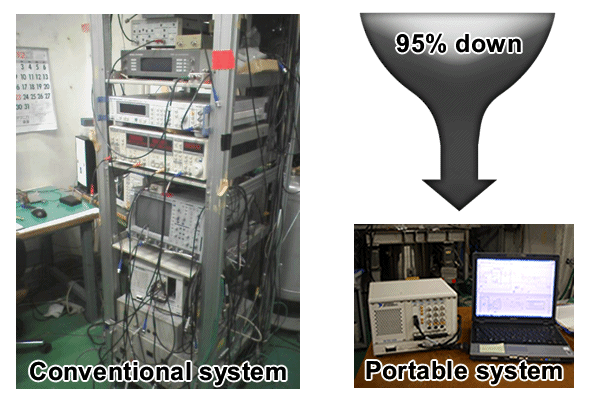
Fig. 6. Image of downsizing the NMRmeasurement system.
Table 2. Comparisonof weight, size, and cost between conventional and portable systems.
| Wight | Size | Cost | |
|---|---|---|---|
| Conventional system | 80 kg | 19 in x 2000 mm | $60,000 |
| Portable system | 7.1 kg | 200 x 200 x 250 mm | $15,000 |
| 90% down | 95% down | 75% down |
Conclusion
A portable NMR measurementsystem was developed for measuring the polarization degree of the polarized HDtarget at RCNP and SPring-8. Downsizing of the NMRsystem was successfully achieved by building the signal generator, oscilloscope,lock-in amplifier and network analyzer in the software (LabVIEW) with the PXI.The performance of the portable NMR system was proved to be compatible with theconventional NMR system.
The S/N ratio of the portable NMR measurementsystem depends on the mathematical operation speed. If the number of samplings foraveraging increases, statistical errors decrease. In the present development,we used a usual laptop PC (CPU:Core 2 Duo T7700, 2.4 GHz) for the portable NMRsystem. Thus, it is expected that the S/N ratio will be improved furthermore byusing PXI express devices, controller with high performance CPU, GPU, and FPGA.
This system which contains the lock-in amp (Phasesensitive detection) is also useful for an acoustic and optical experiment. Theycan extract the signal with a specific frequency and measure the phasedifference in the frequency of 1 Hz ~ 100 MHz. Recently, the computingtechnology progresses and high-performance PXI modules release. It appear thata performance of complex systems constructed using PXI and LabVIEW will be highquality.
Benefits gained using LabVIEWand NI tools
1. The Size was reduced by unifyingmany instruments using PXI and LabVIEW.
2. The cost was 75% cheaperthan the conventional system
3. The portable system enablesus to measure with semiautomatic by working together with virtualized instruments.
4. The number of process forthe NMR measurement was reduced
5. It was possible tocustomize a NMR measurement which standalone instruments
- Mark as Read
- Mark as New
- Bookmark
- Permalink
- Report to a Moderator
Hello there,
Thank you so much for your project submission into the NI LabVIEW Student Design Competition. It's great to see your enthusiasm for NI LabVIEW! Make sure you share your project URL(https://decibel.ni.com/content/docs/DOC-16503) with your peers and faculty so you can collect votes for your project and win. Collecting the most "likes" gives you the opportunity to win cash prizes for your project submission. If you or your friends have any questions about how to go about "voting" for your project, tell them to read this brief document (https://decibel.ni.com/content/docs/DOC-16409). You have until July 15, 2011 to collect votes!
I'm curious to know, what's your favorite part about using LabVIEW and how did you hear about the competition? Great work!!
Good Luck, Liz in Austin, TX.
